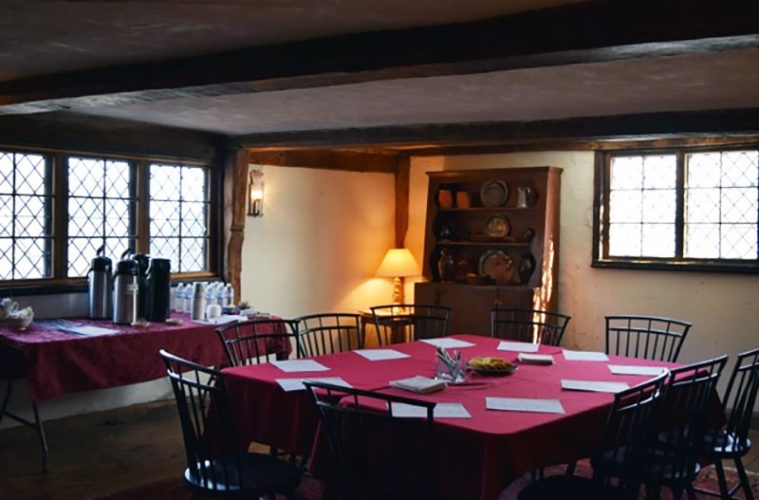The House of the Seven Gables, 350 years old this year, is under the microscope. Scrutiny in old age, while unpleasant for humans, ensures quality longevity and accessibility when it comes to a historic American icon and its adjoining venerable properties.
ObjectIDEA, a museum consulting firm based in Salem, has begun a year-long study of The House of the Seven Gables’ visitor experience. The aim is to develop a vibrant new visitor experience through a reconceived interpretive plan that is informed by the latest information on quality visitor experience and on-campus survey findings. The development of the interpretive plan will involve input from visitors and a collaboration between staff and consultants.
“My hope is that we can use this planning process to create a road map for the future,” says Daniel Marshall, director of visitor services. “By identifying key interpretive stops along our guests’ historical journey, we can fashion a more comprehensive experience. They will walk away with a more complete picture of what we represent and how we fit into the large cultural landscape.”
Interpretation, a primary museum function, is essentially a museum’s communications with its visitors in the form of wall labels, tour guide scripts, signage, brochures, catalogs, exhibition goals and configuration, website content, etc.
Key areas of inquiry that will inform the interpretive plan include the nature of the visitor experience, visitors’ expectations, the visitors’ arrival experience and the messages guests receive throughout their visit. The survey, recommendations and final interpretive plan extend to the entire museum campus. The Gables is one of six historic properties that comprise the National Historic Landmark District on Derby Street in Salem, Massachusetts.
“We are looking at interpretive messaging,” says Matt Kirchman, president and principal planner at ObjectIDEA. “The Gables wants to know how to improve their visitor experience, which includes signage, the content of messaging, how visitors know what options they have, what questions are asked repeatedly, how group tours operate and more.”
ObjectIDEA works with museums around the world, often when a museum is in a transitional phase. “We look at what museums have to say, what people take home and what they remember. We work with everyone from the architects to museum staff to help unify the vision,” says Kirchman.
The work at The Gables, says Kirchman, spans a calendar year. “We have the luxury of trying some things. For example, what if we changed the location where tours start? We can do some piloting, some formative evaluation. Since our contract involves the entire campus, we can take a holistic look. And that will certainly include what happens here in October.”
Staff will work hand in hand with ObjectIDEA. The goal is an interpretive plan for the entire site, including the newly restored Dining Room Chamber, or secret room, that has not yet opened to the public. The plan will encompass budgeting issues and the interpretive needs of The Gables’ multilingual visitors. The plan will also communicate a striking interpretive narrative and provide visitors with a deeper understanding of The Gables and its unique two-part mission to preserve the historic properties at the same time that it provides educational opportunities to the region’s immigrant population.
The interpretive plan is made possible by a $10,000 matching grant from the National Trust.

